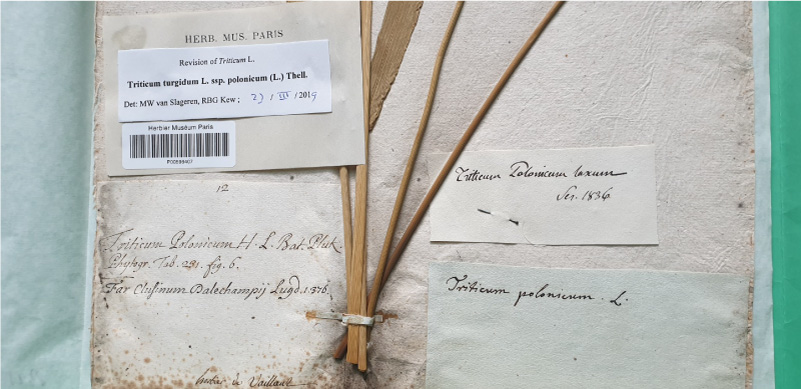
Natural history collections: a meeting place between biologists and historians
Natural history collections and herbaria are meeting places between biologists and historians, between the past and the present. They contain selected zoological or botanical specimens. Moreover, collections have associated documents that include data on the month, year, place and habitat where each specimen has been collected, allowing a “photograph” of a particular ecosystem at a given time. Thus, they become sources for science communication, research and teaching in a wide range of cross-disciplinary fields.
In spite of this, over the past 60 or 70 years, museums and its collections have gradually lost their relevance to the production of knowledge in the biological sciences compared to their 18th and 19th century predecessors, notably in the context of research and teaching. The emergence of new techniques and new sorts of natural history objects, such as tissue or DNA samples; recent discoveries in molecular biology, ecology, ethology and population biology; and the extremely high costs of maintenance and enrichment of natural history collections are some of the reasons for this decline.
In a controversial article published in the journal Science, the relevance of biological collections has been undermined, primarily because they may contribute to the extinction of endangered species as a result of large-scale specimen collection. However, the value of natural history collections is still praised nowadays.
Botanical collections of the Museum of Natural History and Science (University of Lisbon) on display at the exhibition “Plants and People”, visited by ReSEED team in May 2019.
Natural history collections are a vehicle of information and data available to different areas of knowledge. They document the diversity of the natural world, being an inexhaustible source of new research and answers to questions of great relevance to society: public health, nature conservation, pharmacology, climate change or detection and monitoring of environment contaminant accumulation. In particular, the importance of natural history collections is directly related to biodiversity monitoring and the importance of preserving biological diversity, on which human welfare depends.
Recognizing the relevance of biodiversity is not a recent trend, growing as signs of its destruction by human activities intensify. The need for biological diversity protection is not only acknowledged by the academic community. National and international environmental policies in recent decades have reflected this concern. The Convention on Biological Diversity is the international legal instrument for the conservation and sustainable use of biological diversity. It has been signed by nearly 200 countries, which compromise to study the condition and trends of ecosystem services and biodiversity, promoting their sustainable use.
Fragment of herbarium sheet from the Herbarium of the French National Museum of Natural History, visited by ReSEED team in September 2019. Associated information, written in the margins, is crucial for understanding the history of each specimen.
In this context, natural history collections and museums play an important role in safeguarding biodiversity, as repositories of extensive sets of specimens, from current or extinct species, and promoting knowledge about the diversity of the natural world. In other words, “our Natural History Museums are sentinel observatories of life on earth”, allowing the monitoring of changes in ecosystems. Only through the study of collections is it possible to know what was destroyed in a particular place.
As Ernst Mayr and Peter D. Ashlock in Principles of Systematic Zoology stated, natural history collections are “reference tools, just as necessary as the books in a library, which are not in continuous use, yet, must be available when needed”. Natural history collections, wherever they are and as long as they have the associated scientific data – date; place and habitat –, are, thus, a scientific infrastructure, crucial to the knowledge of the natural world of the past and the present, helping to answer global issues relevant to society. They may, indeed, help ReSEED to approach historical changes in agriculture related to cultivated seeds, assessing which seed varieties have been successfully adapted and the forgotten ones.



0 Comments